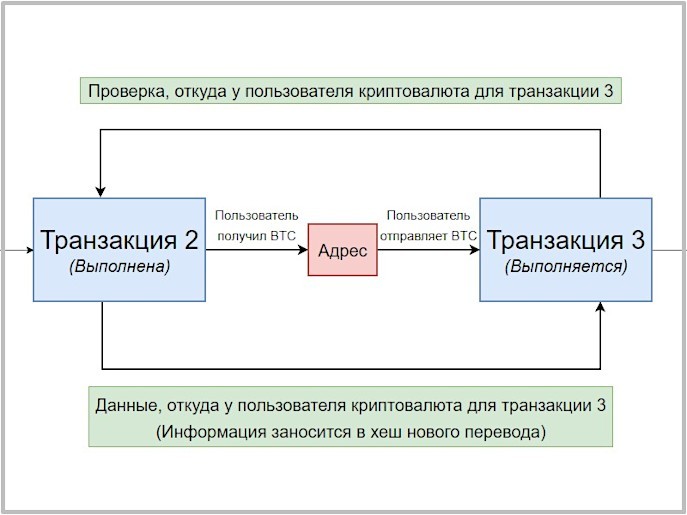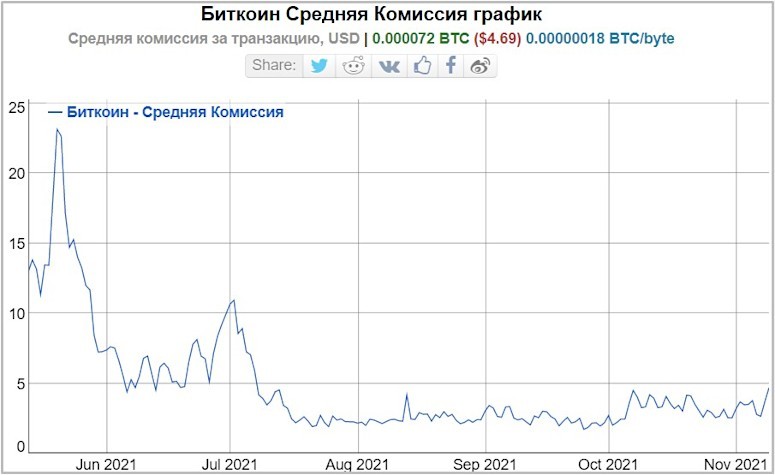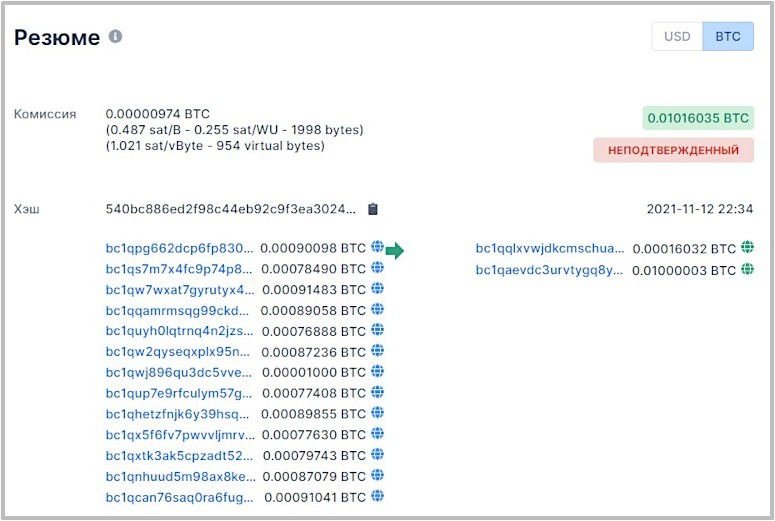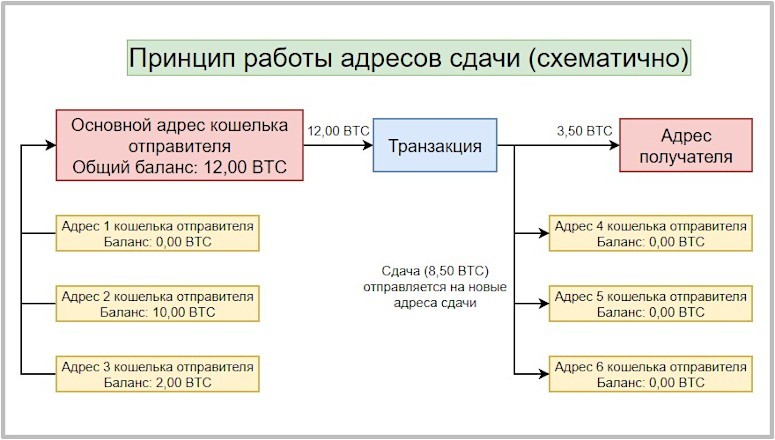Bitcoin is a decentralized anonymous network. Transfers within it are confirmed based on cryptographic algorithms. This allows users to work with digital money without revealing their identity. However, it is possible to track a bitcoin wallet. It is worth noting that it is still easier to calculate the client of a banking organization, because he is obliged to provide personal data.
How the address is arranged in the Bitcoin network
The wallet number in the Bitcoin blockchain is a 160-bit hashed (shortened) version of the public key. The address is generated by the network and serves to identify the vault. Bitcoin uses this algorithm to create the wallet number:
- A private key is generated.
- One-way cryptographic function is applied (it is impossible to perform reverse actions).
- A public key is generated.
- Consecutive double hashing by SHA-256 and RIPEMD-160 mechanisms is used.
- The obtained 160-bit public key function is encrypted into base58 format using an encoder.
After the user completes the fifth step, the bitcoin wallet number is ready. It is later used on the network to properly address cryptocurrency transactions. When transferring digital coins, users refer to the BTC wallet number every time. Without the bitcoin address, the exchange of cryptocurrencies would not be possible.
The principle of how transactions work on the Bitcoin network
Bitcoin uses the Darba apliecinājums consensus algorithm. This mechanism allows miners to come to a common point of view on the current state of the BTC coin blockchain. Each node keeps its own copy of the network. When a miner generates a hash of a new transaction or block (cryptographic problems are solved using computing power to do this), it updates the blockchain. The other nodes check the validity (validity) of the changed digital chain and synchronize their copies.
Transactions line up in a sequential list within the blocks of the network to correctly reference each other. The hash of a new cryptocurrency transfer contains information about the sender and addressee (where the funds originate from and where they are sent). Users can also track a bitcoin transaction through monitoring services.
5020 $
bonuss jauniem lietotājiem!
ByBit nodrošina ērtus un drošus kriptovalūtu tirdzniecības nosacījumus, piedāvā zemas komisijas maksas, augstu likviditātes līmeni un modernus tirgus analīzes rīkus. Tā atbalsta tūlītēju tirdzniecību un tirdzniecību ar sviras finansējumu, kā arī palīdz iesācējiem un profesionāliem tirgotājiem ar intuitīvu saskarni un pamācībām.
Iegūstiet 100 $ bonusu
jauniem lietotājiem!
Lielākā kriptovalūtu birža, kurā varat ātri un droši sākt savu ceļojumu kriptovalūtu pasaulē. Platforma piedāvā simtiem populāru aktīvu, zemas komisijas maksas un progresīvus rīkus tirdzniecībai un investīcijām. Viegla reģistrācija, liels darījumu ātrums un uzticama līdzekļu aizsardzība padara Binance par lielisku izvēli jebkura līmeņa tirgotājiem!
For example, an investor bought 100 BTC. This information will be recorded in the blockchain. The use of the coins received (sale, exchange) will create new transactions on the network. They will refer to the transfer when 100 BTC is credited to the account. Only such transactions are recognized as valid (valid).

New transfers consistently refer to old ones. Also, the user is required to leave a digital signature as proof of using exactly his coins. This process takes place automatically. As a result, the sequence of links of new bitcoin transactions to old transfers creates a chain. It is invested in the blockchain of the cryptocurrency network.
The first transaction in the link of the digital chain is the transfer of the reward to the miner for its creation. Such a transfer has the program property coinbase (can have any content). The following BTC transactions use the scriptSig value (the public key of the recipient of the previous transaction) instead.
Transfer fees
The work of miners is a service for users of the Bitcoin network. Nodes charge a fee for processing payments. However, the bandwidth of the system is limited, so users can compete with each other. The higher the commission offered by the initiator of the transfer, the higher the priority of the request for miners. Bitcoin transactions with low fees are moved to the end of the queue and can be deferred to the next block. Then their processing time increases.
Each digital trade transaction is a data set that is sized in bytes. When forming the commission, this characteristic plays a key role. Calculation is made according to the formula: data size * byte price = recommended commission. Processing fees are constantly changing. As of November 10, 2021, the average fee was $4.69.

Transaction Statuses
A crypto transfer goes through several steps before confirmation, from creating the request to being recorded on the blockchain. Also in the sender’s personal wallet, the bitcoin transaction is marked with one of 3 statuses:
- Pending Confirmation. The bitcoin transfer request has been created and sent to the system.
- Rejected. Bitcoin transaction has not been confirmed by miners due to low commission or other reasons.
- Confirmed. The BTC transfer has been recorded in the blockchain and the sent cryptocurrency has reached the recipient’s account.
How to track a bitcoin transaction
Bitcoin is a transparent cryptocurrency network. Information from it is freely available. Users can view:
- Bitcoin transactions.
- Wallet addresses.
- Blocks of the system.
- The number of coins stored on investors’ wallets, and other information.
You can track a specific BTC transfer through monitoring services. There are also 3 ways to find the transaction of interest:
- Through the hash of the tracked transfer. It is a unique identifier of a BTC transaction. Knowing the hash, you can find out all the details of the crypto-transfer using the browser.
- Through the Bitcoin address of the recipient. The monitoring service allows you to view all incoming and outgoing crypto transactions of wallets. You will only need to find the monitored BTC transfer in the list and familiarize yourself with the information about it.
- Through the Bitcoin address of the sender. The actions are identical to those carried out when using the previous method.
It is easy to track a Bitcoin transfer – you do not need to have special skills to do this. It is better to consider in detail the search algorithm through the transaction hash on the example of the Blockchain.com service. The user needs to take the following steps:
- Open the online resource.
- Go to the Explorer tab.
- In the search bar, insert the available hash.
- Click on the magnifying glass icon.
As a result, a page with Bitcoin transaction data will load.

How the anonymity of the wallet is revealed
Bitcoin allows you to work with digital assets without providing personal data. However, it is still possible not only to track a BTC transaction, but also to reveal the name and location of the owner of the bitcoin wallet from which the transfer was made. In order to secure personal data, you should be aware of ways to establish the identity of the BTC storage holder.
P2P network
Peer-to-peer (peer-to-peer) systems have vulnerabilities. An attacker can connect several nodes to a Bitcoin network, which will allow collecting information to determine the source of bitcoin transfers (IP address). It can be used to identify the owner of a BTC wallet.
Personal information on the wallet
Sometimes the owner of a bitcoin account can be identified because of the binding of his personal data to a specific address. For example, some cryptocurrency exchanges oblige their clients to verify their identity to make a deposit or withdrawal. Also, personal data can be linked to a bitcoin address after a payment in an online store.
Full transparency of transactions on the network
Members of the cryptocurrency community can track transfers and Bitcoin address activity within the system. This allows an attacker to link multiple Bitcoin numbers to a single owner if their identity is known for at least one of the wallets.
Bitcoin address clustering
From a user’s perspective, a cryptocurrency wallet has only one number. However, technically, there are many addresses attached to a bitcoin wallet, which are automatically generated whenever needed.
All coins in the wallet are treated as a single “bill” by the blockchain. It is not possible to send a portion of the “bill”. For a bitcoin transaction, the “banknote” is given in its entirety. But the initiator of the transfer, the amount of which is less than the total savings in the wallet, the balance is returned. It can be credited to other Bitcoin storage numbers, which are called “change addresses”.

Sometimes there are more than 2 numbers involved in a bitcoin transfer. Also, addresses are divided into inputs and outputs of the transaction, which can be several. Thanks to them, the blockchain correctly records information about where the cryptocurrency is transferred from and to.
Clustering is a method of analyzing transfers on the network, in which bundles of wallets, including change vaults, are evaluated. By comparing this data, it is possible to identify all addresses that belong to the same person.
How to maintain anonymity online
Ways to disclose the identity of the user are important for the work of law enforcers. In this way it is possible to calculate the coins obtained by criminal means. But the personal data of wallet owners can also be of interest to intruders. To prevent this from happening, you need to know the methods of preserving anonymity. For this purpose are used:
- Tor-browsers.
- Mixers.
- Special wallets.
- Alternative cryptocurrencies.
Theoretically, it is possible to track bitcoin transactions even when using all methods of anonymization. But if the user cares about security, it will be much more difficult to do it.
Tor
The Onion Router technology is used to encrypt the connection to the internet. The concept is usually implemented through special Tor browsers. They use multi-level encryption with 3 keys that are generated when the connection passes through 3 random proxy servers (intermediate links between the subscriber and the internet).
With Tor technology, the user hides location information and personal IP address so that attackers cannot identify the identity of the cryptocurrency wallet owner.
Mixers
This is software that is used to anonymize the initiator of subsequent bitcoin transactions. The algorithm of work of such services:
- The user sends personal coins to the address of the mixer.
- The digital currency is split and chaotically mixed with the assets of other investors.
- The user receives back the same amount of money he sent to the mixer in installments from different addresses.
This method confuses the attacker and makes the process of identifying the identity of the bitcoin vault owner laborious. But clustering technology allows you to compare the amounts of coins transferred and received.
Specialty wallets
Some bitcoin vaults allow users to send BTC coins anonymously. Popular among such wallets in 2021 are:
- Matbea – online vault.
- Ledger Nano S – a hardware wallet on a physical digital device in the form of a flash drive.
- Samourai Wallet – a mobile vault with an app for Android smartphones.
Alternative cryptocurrencies
After the success of Bitcoin, some digital project developers began to create completely anonymous networks. Popular in 2021:
BTC transaction tracking services
There are many monitoring resources that allow you to view information about the Bitcoin blockchain. The list of popular monitors in 2021 is shown in the table below. You can track Bitcoin transfer through them.
| Monitoring Service | Apraksts |
|---|---|
| Blockchain.com. | The most famous observer service. Until 2018, it was called Blockchain.info. Provides users with almost all onchain metrics – indicators of the cryptocurrency network (information about transactions, chain blocks and so on) |
| Blockchair.com. | The second most popular monitoring service in 2021. The service reviews 17 different blockchains |
| Blockcypher.com. | Very similar to Blockchain.com in terms of functionality, but provides users with fewer onchain metrics |
| SoChain.com. | This monitoring service simultaneously offers customers to create a wallet, just like Blockchain.com. SoChain.com provides most of the onchain metrics of the Bitcoin digital chain |
Biežāk uzdotie jautājumi
📋 What are the basic principles of cryptography behind Bitcoin?
The Bitcoin payment system uses digital signature and sequential hashing. These principles of cryptography have increased the security of the network.
📝 Why is a digital signature used?
The principle is based on asymmetric encryption, which realizes one-way functions in the Bitcoin network using a public key (no reverse cryptographic calculations are possible).
🤔 Why is sequential hashing necessary?
This principle has realized in the Bitcoin payment system such encryption that makes changes to the structure of the blockchain impossible. Each link of the cryptocurrency chain has a unique identifier – the sum of hash functions of the previous and present blocks. The same principle is used to encrypt bitcoin transactions.
👥 VPN increases anonymity on the network?
Such services change the location of the wallet owner to the rest of the users. Also, a VPN updates the IP address, which also makes it harder to reveal the sender’s identity.
❓ How to choose a bitcoin mixer?
You need to analyze the reputation of the service and reviews about it. It is not recommended to use new bitcoin mixers.
Vai tekstā ir kļūda? Izceliet to ar peli un nospiediet Ctrl + Ievadiet
Autors: Saifedean Ammous, kriptovalūtu ekonomikas eksperts.















